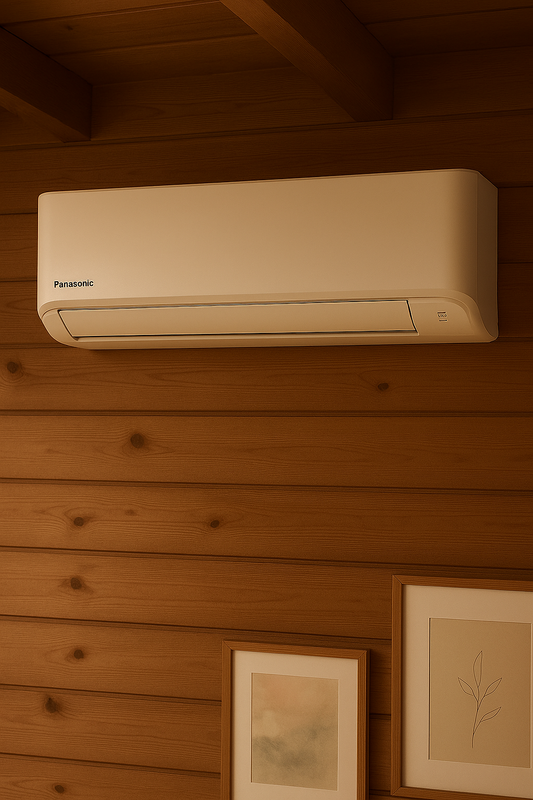Bergvärmepump Installation: En Effektiv och Miljövänlig Värmelösning
Bergvärmepumpar har blivit allt populärare som en hållbar och kostnadseffektiv värmelösning för bostäder och företag. I denna artikel kommer vi att utforska bergvärmepumpinstallation, dess fördelar och användningsområden, samt relaterade tekniker och vanliga frågor.
1. Definition och Bakgrund
En bergvärmepump är en typ av värmepump som använder sig av den naturliga värmen som lagras i marken för att producera värme och varmvatten. Genom att utnyttja den konstanta temperaturen under markytan kan bergvärmepumpar erbjuda en stabil och pålitlig värmekälla året runt.
Installationen av en bergvärmepump innefattar vanligtvis att en serie av hål grävs i marken, där en vätskefylld slinga läggs ner. Denna slinga fungerar som en värmeväxlare och möjliggör överföring av värmeenergi mellan marken och värmepumpen.
2. Fördelar och Användningsområden
En av de främsta fördelarna med bergvärmepumpar är deras höga energieffektivitet. Genom att utnyttja den naturliga värmen i marken kan bergvärmepumpar producera mer energi än de förbrukar, vilket resulterar i lägre energikostnader och minskade koldioxidutsläpp.
Bergvärmepumpar är också mångsidiga och kan användas för att producera både värme och varmvatten, vilket gör dem lämpliga för användning i både bostäder och kommersiella fastigheter. Dessutom är de relativt underhållsfria och har en lång livslängd, vilket gör dem till en kostnadseffektiv investering på lång sikt.
3. Relaterade Tekniker, Begrepp eller Variationer
Det finns flera olika varianter av bergvärmepumpar, inklusive vertikala och horisontella system beroende på markförhållandena och tillgänglig yta. Dessutom kan bergvärmepumpar kombineras med andra värmekällor, såsom solenergi eller luftvärmepumpar, för att skapa hybridvärmesystem som ytterligare ökar energieffektiviteten.
4. Vanliga Frågor (FAQ)
-
Är bergvärmepumpar lämpliga för alla typer av fastigheter?
Ja, bergvärmepumpar kan installeras i både små och stora fastigheter, och deras flexibilitet gör dem lämpliga för en mängd olika byggnadstyper.
-
Hur påverkas installationen av bergvärmepumpar av markens egenskaper?
Markens egenskaper, såsom jordart och fuktighet, kan påverka valet av installationsmetod och systemdesign, men bergvärmepumpar kan vanligtvis anpassas till de flesta markförhållanden.
-
Vad är den genomsnittliga livslängden för en bergvärmepump?
Med korrekt underhåll kan bergvärmepumpar ha en livslängd på upp till 20 år eller mer, vilket gör dem till en långsiktig och pålitlig värmelösning.
5. Sammanfattning
Bergvärmepumpinstallation erbjuder en hållbar, kostnadseffektiv och pålitlig värmelösning för bostäder och företag. Genom att utnyttja den naturliga värmen i marken kan bergvärmepumpar producera värme och varmvatten med hög energieffektivitet och minimal miljöpåverkan. Med rätt planering och installation kan bergvärmepumpar vara en långsiktig och hållbar investering för att uppfylla uppvärmningsbehov.
6. Installation Process
The installation process of a ground source heat pump involves several key steps. Firstly, a site survey is conducted to assess the geological and environmental factors that may affect the installation. This includes determining the optimal location for the ground loops or boreholes based on soil composition, available space, and accessibility.
Once the site assessment is completed, the excavation or drilling of boreholes is carried out. This process requires specialized equipment and expertise to ensure the proper installation of the ground loops at the appropriate depth and spacing. The loop configuration may vary based on the specific heating and cooling requirements of the property.
Following the placement of the ground loops, the heat pump unit is installed within the property. The necessary connections between the ground loop system and the heat pump are established, and the system is thoroughly tested to ensure proper functionality and efficiency.
7. Energy Performance and Cost Savings
Ground source heat pumps offer significant energy performance benefits, particularly in comparison to traditional heating systems. The stable underground temperatures enable the heat pump to operate with high efficiency throughout the year, resulting in reduced energy consumption and lower utility bills for the property owner.
Moreover, the long-term cost savings associated with ground source heat pumps make them a compelling investment. While the initial installation costs may be higher than conventional heating systems, the energy savings over the lifespan of the system often outweigh the upfront expenses, providing a favorable return on investment.
8. Environmental Impact
One of the key advantages of ground source heat pump systems is their minimal environmental impact. By harnessing renewable geothermal energy, these systems significantly reduce reliance on non-renewable energy sources and contribute to lower carbon emissions. This aligns with sustainable development goals and supports efforts to mitigate climate change.
Additionally, the absence of combustion processes in ground source heat pumps eliminates the associated air pollution and health risks, further enhancing their environmental credentials.
9. Case Studies and Success Stories
Several real-world examples illustrate the successful implementation of ground source heat pump systems in diverse settings. These case studies showcase the versatility of ground source heat pumps in residential, commercial, and industrial applications, highlighting their adaptability to varying heating and cooling demands.
From single-family homes to large-scale facilities, the documented experiences of property owners and businesses demonstrate the tangible benefits of transitioning to ground source heat pump technology, underscoring its reliability and efficiency in different contexts.
10. Conclusion
The widespread adoption of ground source heat pumps reflects their effectiveness as a sustainable and efficient heating solution. With ongoing advancements in technology and increasing awareness of environmental considerations, ground source heat pump installations are poised to play a pivotal role in the transition towards cleaner and more resilient energy systems.
Relaterade artiklar
- href="https://montigo.se/blogs/kunskapsbank/billig-varmepump">Billig Värmepump: En Effektiv Värmelösning
- href="https://montigo.se/blogs/kunskapsbank/bergvarme-nibe">Bergvärme NIBE: En effektiv lösning för hållbar uppvärmning
- href="https://montigo.se/blogs/kunskapsbank/installera-luft-vattenvarmepump">Installera luft-vattenvärmepump
Relaterade produkter
- href="https://montigo.se/products/elpaket-bas">Elpaket Bas
- href="https://montigo.se/products/elpaket-plus">Elpaket Plus
- href="https://montigo.se/products/gree-amber-25">Gree Amber 25
- href="https://montigo.se/products/gree-amber-35">Gree Amber 35
- href="https://montigo.se/products/gree-console-35">Gree Console 35



